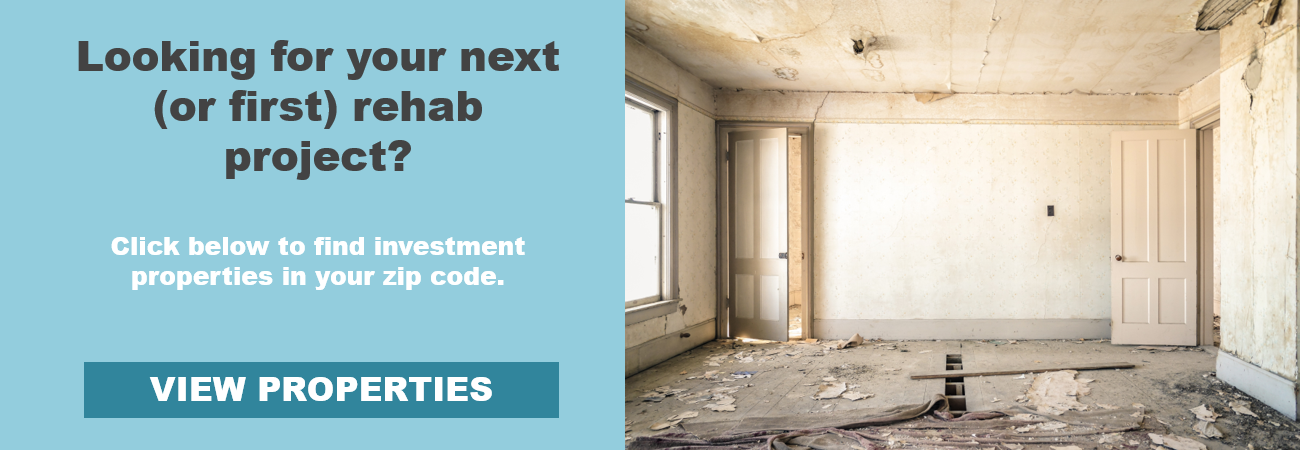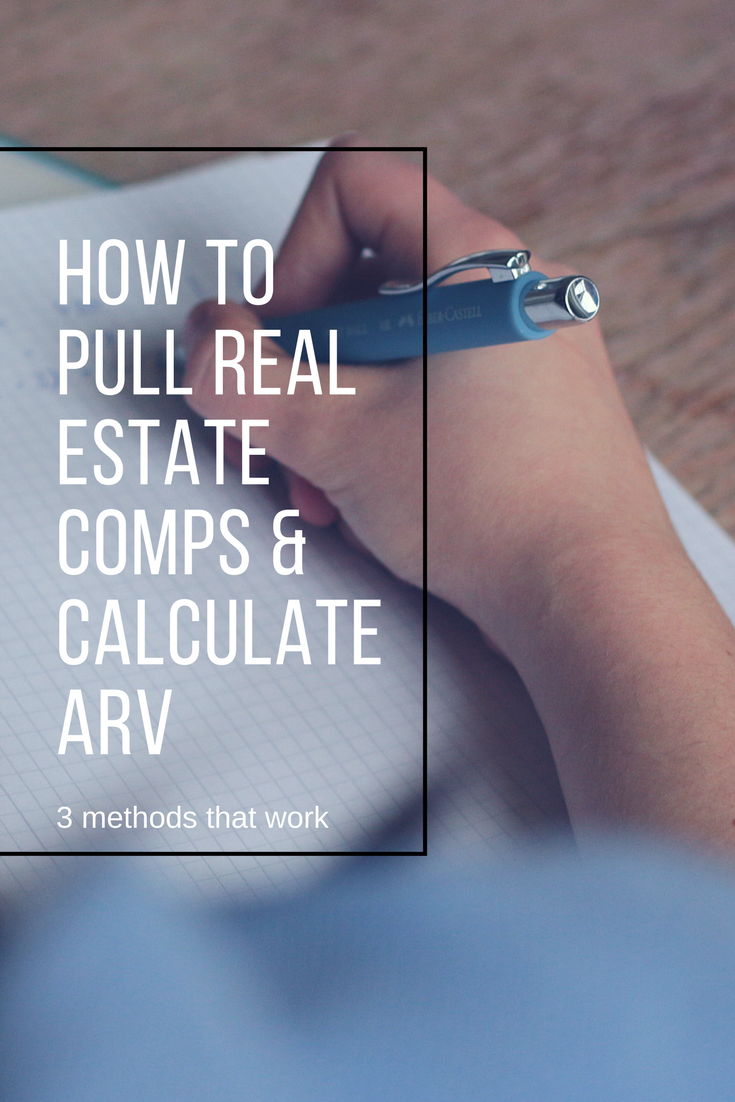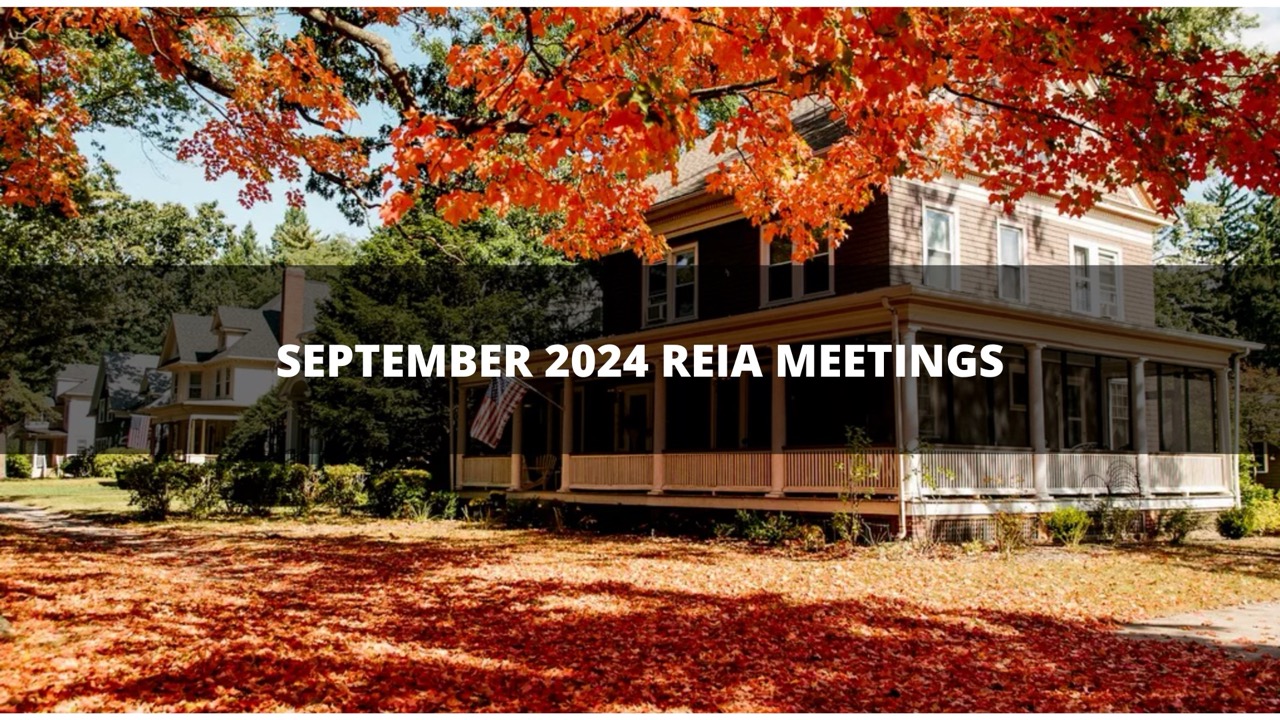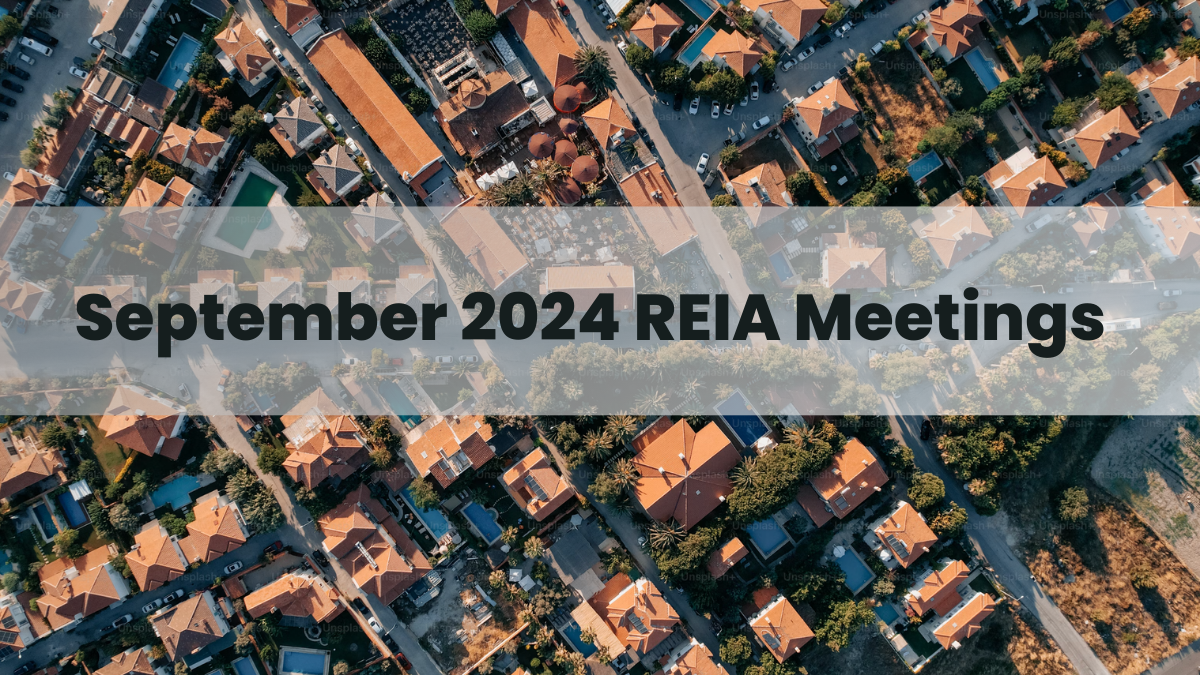How to Pull Real Estate Comps & Calculate ARV for Investment Property – 3 Methods that Work
As an investor, you are probably familiar with the 70% rule. The rule says that investors should pay 70% of the ARV minus repairs for an investment property. The percentage can change from market to market, but one thing doesn’t change — the formula’s reliance on accurate after-repair-value and estimated repair costs.
The formula only works if you have an accurate repair value (ARV).
What are comps?
Comps, short for comparable sales, are recently sold houses that are similar to the property you are interested in buying. That means they are in the same area, are roughly the same size and in the same condition. Comps help determine your ARV.
Many investors choose to use free websites such as Zillow, Trulia, or Redfin to pull information about similar properties, but to get the most accurate numbers possible, you’ll want to access the Multiple Listing Service, also known as the MLS.
We’ll show you how to pull comps and estimate ARV with both free real estate websites and the MLS. Even if you’re an experienced investor, you might find a new method below.
How to Pull Real Estate Comps
There are three main ways to pull real estate comps:
-
- Use the MLS to pull comps.
-
- Develop a relationship with a real estate agent.
- Use non-MLS sites to pull comps.
These methods are expanded upon below…
Method #1: Using the MLS to Pull Comps
After logging into the MLS, you’ll be able to do a comparable search by looking for similar properties within a small radius of yours.
Your goal is try to come up with about 5-10 properties to use as comps. If you have too few or too many, expand or narrow your parameters respectively.
Step 1: Select the Type of Property
First, select the type of property you are looking at (condo, single family home, etc.) Enter the address of the property you are trying to comp, then select your radius. Start by selecting a half mile radius. If there are a lot of sales in the area, you might decrease the radius to a quarter mile, and if there are very few sales, you will need to increase it.
Step 2: Select the Status
Next, select listings that are active, backup status, pending and sold. Make sure to change the default “sold” parameter to 6 months or 180 days so that the sales are recent.
Looking at the currently listed and pending properties gives you an idea of the “competition” in the area, but remember to take these two statuses with a grain of salt since they haven’t actually sold yet.
Step 3: Determine the Size Range
Make sure the houses you look at are similar to your house in square footage, bedroom and bathroom count, age and lot size. Your square footage parameter should be about 300 square feet above and 300 square feet below the square footage of your property.
Step 4: Enter the City and Zip Code
Even though we defined a radius, the city field still needs to be entered. Sometimes your property is located right next to another city. Just because the houses are close together, doesn’t mean that comps from a different city will necessarily be accurate.
For even more accurate results, you’ll also want to enter the zip code or neighborhood/subdivision name for the area you are looking in. This will help to target your search even more, and is especially relevant to big cities with a wide variety of neighborhoods.
After entering the city, zip, or neighborhood info, hit the “count” button. If you don’t see at least 10 sales, you may want to adjust some of your parameters (primarily size and radius).
The first report that pulls up will be the column report if you haven’t changed any of your default settings.
Step 5: View the Map Report
You will probably also want to pull the map version of the report. The report reveals if the properties are clustered in any type of area if there are any factors to take into consideration (such as freeways or train tracks). The map will also be helpful for determining school zones — as they can change from street to street and have a big impact on the ARV.
On the column report, select all the properties you are interested in seeing on the map, or you can select all of them. Go over to the map icon to view the map, which will give you a nice visual representation. Clicking on the pins on the map will bring up all the details about the property.
Another great feature of the map view is that it can be emailed or printed, which will be a big help if you plan to visit the properties.
Step 6: Evaluate the Condition of the Houses
When viewing the details of each house, look at the condition of the home. Is it older, newer, or renovated? Is there central air? Is the heat electric or gas?
Also, take a look at the features. What are the appliances in the kitchen and bathrooms? Does the house have a pool?
Use these parameters to select only the houses that more closely match the one you are considering buying.
Step 7: Export or Send the Final Comps
Once you find several houses that meet the criteria above and are similar to yours, you can email it to yourself in the form of a PDF. These PDFs of similar properties make up the comps for your property.
If you want to dive deeper, you can also check out tax records to see what other investors are paying for properties in your house’s area.
If you do not have MLS access, you have two other options for pulling comps. One is to develop a relationship with an agent and get their help, and the other is to use free websites to pull comps using a similar process to the one above.
Step 8: View Comps
The last step to verify your comps is to actually drive around and look at them. This is important for several reasons. While looking at pictures online and viewing Google street views of the neighborhood are helpful, nothing beats actually seeing the house. A neighborhood looks different from street to street – and street view reveals only part of the appearance.
-
- What do the neighbors’ yards look like?
-
- What is the noise level like?
-
- Are people maintaining their houses well?
-
- Are there sidewalks?
-
- If not, are the ditches maintained by the neighbors?
-
- Are there stray dogs or other animals running around?
- Are there industrial buildings nearby? How close?
While none of these are deal breakers, they’ll give you an idea of how much people value their property and you may not pick up on these nuances by looking at photos.
Of course, if you can’t visit the neighborhood, Google Street View is your best option for getting a feel of the area.
Once you have your comparable sales, you will have an idea of the after repair value of the house once it is repaired. This helps determine your offer, what repairs to do, and what your spread will be. Your offer when purchasing an as-is investment property will usually be 70% of the after repair value, minus repairs. So if the ARV is $100,000, and the repairs are estimated to be $10,000, your offer should be about $60,000.
Use comparable sales to negotiate with investors selling a property. If their ARV seems too high – tell them and make them an offer based on what you can pay for the property to still make the spread you need.
The comparable sales will also help determine what types of repairs the house needs. If your house is outdated compared to others in the neighborhood, then it needs to be updated to have similar features. Use comparable sales to know how a major remodel might increase your spread.
Method #2: Developing a Relationship With an Agent
If you’re not an agent or don’t have MLS access, working with an agent is the ideal next method.
There are a few ways to start developing this useful relationship:
Craigslist:
Place an ad in Craigslist and offer to pay a small amount for an agent’s help in pulling comps.
Have your spouse or family member get licensed! Many investors choose to have a family member get licensed and structure their business that way.
Gain Unlicensed Assistant Access:
Become an unlicensed assistant for a local realtor. This is the only option that will allow you to access the MLS without actually getting your license.
The MLS is a system that is owned by the local board of Realtors, which is a chapter of the larger state and national boards. Not all licensed real estate agents are realtors. While most agents choose to become Realtors to access the MLS, there is no law requiring that agents join.
It’s very common for busy real estate agents to have a personal assistant who does work for them and needs frequent MLS access. Because it’s become so common for Realtors to have assistants, the Boards of Realtors came up with this unlicensed assistant access – which has very few limitations (such as showing property, and some other small legal limitations).
How does this work for you?
Find a friendly agent you would like to do business with. It could be an investor-friendly agent you met at a local REIA, or one you identified as young and hungry and willing to work with you, or just someone who is used to working with investors.
Make them an offer: State that you would like to become their “unlicensed assistant”, but not so you can actually be their assistant. You need access to be able to do the intense levels of research that you want to be able to do on the properties that you’re interested in. And pulling this information will take them a lot more time than they will want to put into it themselves.
If you find someone who is amenable to this idea, it’s a simple process. It’s just a one-page form you have to fill out.
So the next question is: What if you don’t know any Realtors? You can do it cold!
Place an ad on Craigslist, or just call around to Realtors in your area. Your ad can say, “$1 Real Estate Agent Needed.” When they call, tell them what you are looking for. You need someone who can write offers for you, and you need to get direct access to the MLS via the unlicensed assistant. Offer to list your properties with them, letting them know that you do a lot of the work yourself.
And if that doesn’t work, offer to pay their MLS membership dues! That offer would be hard to refuse.
Method #3: Use Non-MLS Websites
If you don’t have MLS access, and you can not find an individual to help you, then you can still pull comps.
One benefit to pulling comps with non-MLS websites is that the MLS only shows properties that sold or were listed with the MLS, meaning that it won’t include alternatives like For Sale By Owner or lease options. With the options below, you will see everything that sold.
Zillow
Zillow is probably the most popular free site for researching home value, and you might have heard of their “Zestimate” term. A Zestimate is an automated estimate based on public records and past sales of the house and surrounding comps. These automated estimates aren’t always accurate, but the “sold” listings are.
Pulling comps in Zillow is very similar to pulling comps on the MLS.
Because Zillow starts out with a map based on Google maps, it’s a good idea to put your address into Google maps so you can get an idea on where the location is if you don’t already know. Then go to Zillow and punch in the zip code or the city where your house is located.
Under filters, select recently sold – 6 months.
Refer back to Google maps if you need to, but find the location of where your property would be on the Zillow map. If you click on the house and the address, Zillow shows all the details on the house.
After that, you’ll use the same criteria described above in the MLS process to determine which properties qualify as comparables.
If you choose to accept the value of the house that Zillow provides and the house hasn’t been sold recently or lacks adequate comps, make sure to reference several real estate websites since the numbers may not be accurate.
Zillow’s weakness is that if there isn’t enough public record data if your neighborhood is changing, or if there is something unique about your house, Zillow won’t account for it. If you are not familiar with a property and only using a Zestimate, the number can be misleading.
HomeSnap
HomeSnap is a free app and is also quite accurate. The ARV listed for the property on HomeSnap is a mid-price between the high and low value. They also give you information regarding school ratings, average days on market, and a market score.
Using the Homesnap app (available for iPhone, iPad and Android devices) you can snap a photo of any home to find out all about it. For listed homes, you may be able to see interior photos too! When you’re ready to buy or sell real estate, contact a real estate agent within Homesnap to schedule a showing or list your home in the MLS.
Homesnap is powered by a specialized homes database that combines hundreds of disparate sources of data. Data feeds include over 40 MLS real estate databases, property tax records, census data, geographic boundaries, property polygons, school information, mortgage rates and more.
Trulia
Like Zillow, you can search Trulia for “sold” listings to pull comparables.
Redfin
Redfin is an online brokerage, but just like Zillow and Trulia, you can pull comps based on recently sold houses. According to their website, they use the same data as real estate agents to give you the estimate with the lowest published error rate on the market.
Unlike other appraisal estimators, the Redfin Estimate looks at 100% of the homes on the MLS to calculate your property’s current market value — so you get an accurate online estimate.
Property Shark
Property Shark allows you to search for properties like Zillow and Trulia using public record that lets you view limited results. They also have a comparables tool with a paid account.
With the paid tool, you can search by radius, zip code or map. An account also includes dedicated appraiser tools.
Realtor.com
Realtor.com now allows you to search for your home and show what other houses have sold in the area.
RealQuest – Monthly Fee
RealQuest is a property and ownership search engine that minimizes cost, increases productivity and guides you toward sound decisions. You will have access to the nation’s largest online property information database. This means instant access to accurate and exportable data on 97% of all property transactions in the U.S.
RealQuest offers on-the-fly reporting, an all-encompassing array of mortgage analytics, advanced automated valuation solutions, mapping solutions, and delivery options. Discover property level data and analytics today.
Other Tips
While non-MLS websites may provide helpful data, keep in mind they may not always be accurate. Here are some tips to keep in mind when pulling comps without the MLS:
-
- Make sure to check more than one website.
-
- Make sure to drive by the houses you use for comparables when possible.
-
- Master the area. Know the area and the homes bought/sold and days on market.
-
- Look at the prices per square foot – not just total sold value.
-
- When was the house built? Even a nicer older house might be worth less than a new build.
-
- Pay attention to the lot size in addition to the house square footage.
- Make sure to research current market trends and seasonal price changes.
Why is Someone Else’s ARV so Different than Mine?
There is one question we often get at MyHouseDeals — why are all the ARVs so high? And our answer: they are usually not. Here’s why:
As an investor, you know that you or your buyer are going to improve the property. Doing so improves the neighborhood, and enough neighborhood improvements will actually raise property values for existing houses.
When you’re trying to sell a house, you’re trying to make the biggest spread possible. When an investor seller is calculating the sales price, usually 70% minus repairs, they are looking at the BEST comps in the neighborhood. They will look at newer sold properties, properties with recent improvements, and properties on nicer streets in the area.
Investor buyers, on the other hand, are going to be more conservative. A small mistake or unexpected repair could diminish margins in a heartbeat. So they may not look at the BEST comps, they’re going to look for a mid-point. Buyers usually aren’t going to push the value to its potential when making an offer, and that’s okay.
Remember that most wholesalers and investors will negotiate because they know that pulling comps is an art and not a science. And if they can’t negotiate, they will let you know — but you should always ask.
So, how do you pull comps and calculate ARV? Leave your comments below!








